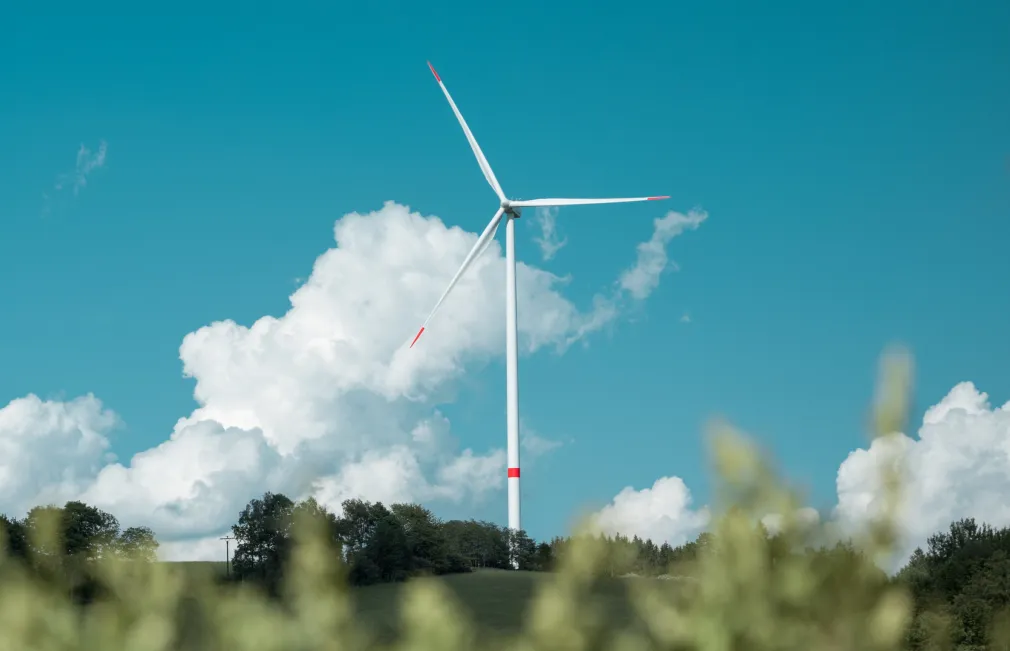How to avoid EV charger overload before it happens.

Electric vehicles (EVs) are quickly taking over the roads. EV sales in 2025 are expected to top 20 million – that’s more than a quarter of all new cars. All those vehicles need somewhere to charge, and charging points are growing just as quickly.
Public EV chargers have doubled in number since 2022; in Europe, they passed the 1 million mark in 2025. Chargers are also popping up across homes and commercial buildings. And with that growth comes a problem that could dent adoption if ignored: EV charger overload.
In this article, we’ll talk about EV charging stations, overload electric infrastructure, and what real-estate stakeholders can do to ensure EV chargers don’t push electrical systems over the edge.
Learn how energy data is empowering real-estate investors to future-proof their investments.
What is EV charger overload?
EV charger overload occurs when the power demand placed by charging vehicles exceeds the capacity of the existing electrical system (panel, feeders, transformers, wiring, etc). In short, the system is asked to deliver more current than it was designed to supply continuously. Overload can result in underperformance in charging or worse, damage to the electrical structures.
Every electrical system has a maximum safe load. For example, a building’s main panel might be rated for 400 amps, or a transformer may handle up to a certain kilovolt‑ampere (kVA) capacity. And EV chargers in buildings are typically part of the overall draw. So, suppose they (especially high‑power Level 2 or Level 3) draw a large share of that capacity, especially alongside HVAC, lighting, elevators, and machinery. In that case, the total load can exceed what the system can handle.
Here are the common causes of EV charger overload:
- Simultaneous high demand: overload may not necessarily be caused by one large charger, but by many chargers running at, or near, full power at the same time, particularly during peak usage periods. If many EVs start charging at the same moment, or with other heavy loads active, demand spikes can exceed capacity
- Thermal stress and equipment degradation: When the system is overloaded frequently, wires, breakers, or component parts may heat up more than they should. That, in turn, affects their lifespan and may even cause premature failure. Overheating can also lead to safety hazards like insulation failure or fire risk
EV charger overload is a growing problem
EV chargers are becoming ubiquitous, at least in nations where EVs dominate the road. There were over 17,000 charging points in Denmark as of early 2024. That means you’ll find chargers (including those high-capacity fast ones) in commercial and residential buildings. And those additions obviously impact the power draw of those buildings, which may not have been originally built to handle that kind of power requirement.
Although EV adoption and the addition of chargers to public and private infrastructure are generally a good thing, it has led to the issue of overload in many places. Researchers studied EV charging loads in Denmark, Finland, Norway, and Sweden using national travel survey data.
They found that the average consumption from EV charging wasn't very high, but the peak EV charging load becomes substantial under high EV‑penetration scenarios. For instance, in “dumb charging” (i.e. no control or scheduling), peaks may exceed what many residential low‑voltage (LV) feeders or transformers were originally sized for.
Another study out of California showed that by 2035, about 50% of the feeders (those local circuits delivering power from substations to customers) are expected to be overloaded just because of EV charging demand. The researchers expect the infrastructure to require upgrades (twice as much for residential ones).
For facility managers, developers, and property owners preparing for or already deploying EV chargers, the risk of overload isn’t distant. It’s pretty much already here. But this isn’t a problem that can’t be solved.

How to prevent EV charger overload?
To mitigate the overload risks we’ve discussed, facility managers, property owners, and fleet operators can use three interlinked technological strategies. When used together, they help manage demand, optimise power use, and avoid expensive or disruptive infrastructure upgrades.
Smart charging
Smart charging (sometimes called “managed charging” or “V1G” when power is only drawn into the EV) means using software, communication, and schedules to adjust when and how fast EVs charge. The goal is to ensure that they don’t stress the electrical system. EV smart chargers respond to signals from the grid, such as time-of-use, to intelligently shift or pause charging. They can also shift charging to off-peak hours to balance the needs according to surges.
There are also energy management tools that monitor multiple charging points to optimise schedules and reduce grid stress.
Dynamic load balancing
While smart charging manages timing and rates, dynamic load balancing (DLB) ensures that at a site (or across multiple chargers), the total load stays within electrical limits. It does so by distributing available power efficiently.
The system monitors real‑time power usage across all connected chargers and other electrical loads (like HVAC, lighting, and appliances), and automatically adjusts power allocation. If one charger is drawing high power and others are idle, DLB may throttle the fast one or shift capacity. It’s different from static load balancing, which allocates fixed quotas regardless of usage.
DLB modules are typically integrated into the software of the charging station. The main benefit is that more cars can charge with EV chargers without requiring major infrastructure hauls. And, of course, there are fewer trips and electrical damages.
Grid-aware and vehicle-to-grid (V2G) solutions
Now, these two solutions are more advanced and are gradually being rolled out in markets with fast-growing EV adoption. It’s basically based on the idea of two-way interaction, where chargers interact with the grid.
Let’s look at each one of them:
Grid‑aware charging
These systems monitor grid conditions (current demand, available capacity, dynamic pricing, or even renewable generation availability) and adjust charging accordingly. For example, during times of high grid stress, charging rates may be reduced. And during periods of excess renewable power, charging can be increased.
Vehicle‑to‑grid (V2G)
In V2G, EVs draw electricity from the grid but also send stored power back when needed (peak times, emergencies). This turns fleets, parked EVs at work, and even residential EVs, into distributed storage assets for addressing demand fluctuations. For instance, Virta has deployed V2G charging stations at its HQ. When the grid (or site load) is under stress, energy from parked EVs can be used to offset load elsewhere.
Practical tips for buildings to better manage EV charging capacity
For the most part, Nordic countries have adapted well to growing EV charger demands on the grid. But work must be done on an individual level as well for buildings that provide EV chargers to their inhabitants or users. In fact, having an EV charger in the building can be an attraction for tenants. But obviously, you don’t want that addition to cause interruptions, or worse, damage your electrical infrastructure.
So, keeping in mind the solutions we just discussed above, here are some practical steps you can take to make your buildings fully EV charging ready.
- Conduct existing capacity audit: You can hire a qualified electrical engineer (or company) to assess the current maximum power handling capacity of your building. They could also look at how much the grid can handle by looking at data on transformers and feeders
- Plan for future demand: Look at the current usage, especially for EV charging, and estimate how it might increase with more EV usage. You could conduct surveys to find out if any tenants plan on acquiring EVs
- Use EV energy management systems: Either by using smart chargers or signing up for grid-aware solutions, you could adopt a smart EV energy management system that prevents overload in the first place. That can be a big investment, but it’s one that will pay for itself by avoiding mishaps
- Pre‑cable or pre‑duct in parking areas: When constructing or renovating, it’s much cheaper to install conduit or cabling capacity in parking areas before chargers are needed. The European “Right to Plug” policy (under the EPBD) encourages pre‑cabling 50% of parking spaces in new residential buildings, to reduce retrofit cost later
- Engage your utility provider early: Work with your utility provider to increase the load capacity of the infrastructure through which your building is supplied with energy. You may also need to get approvals for installing fast chargers on-site
- Choose the right charger mix: Depending on the usage of the consumers, you could invest in chargers that don’t have a huge power draw (for example, Level 2). For instance, if people are charging cars at work for 6+ hours, you don’t necessarily need high-power, fast chargers
- Adopt protocols like OCPP: Using chargers and management systems that support Open Charge Point Protocol (OCPP) ensures better interoperability, capability for smart charging features, easier upgrades, and more vendor choice. The most recent versions (OCPP 2.0.1 / 2.1) also have support for DER control and future‑proofed features
- Continuously monitor energy data: Collect usage data (power draw, timing, which chargers are used), track peak loads vs spare capacity. This can help you detect early signs of overload risk
Future-proofing EV charging
There will be a time when EV chargers are a standard in almost every building (like lighting, electric outlets, and air conditioning). And before that time arrives, you want your buildings to be ready, so there’s no threat of EV charger overload.
Invest in solutions that are appropriate for your unique needs (for example, whether you rely entirely on grid or have on-site generation). Secondly, use smart chargers, DLP, and even V2G (where available) to manage capacity in real time.
And when in doubt, turn to data. That’s where comundo comes in. We help real estate portfolio owners understand their assets’ energy consumption. With automated, accurate data collection directly from utilities, our solution spills the secrets on where consumption is draining your budgets and where there are opportunities for optimisation.


.png)
